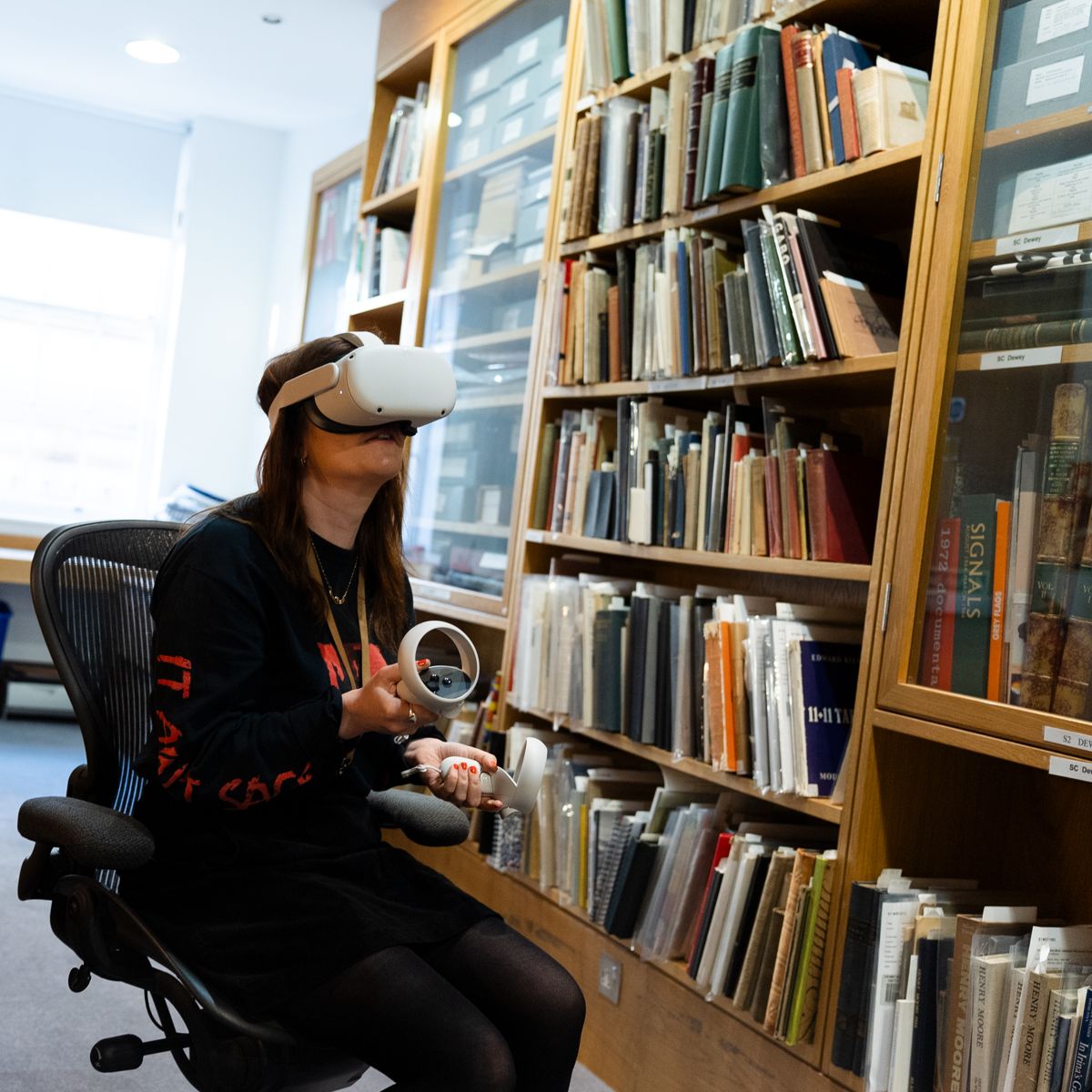Leeds is using virtual reality to preserve the “A Light and Sound Transit” urban installation. Visitors can now experience the artwork’s light and sound displays through a 360-degree video, alongside archival materials, ensuring ongoing appreciation and study of this significant piece of public art.
How is Leeds preserving the “A Light and Sound Transit” installation?
Leeds is preserving the “A Light and Sound Transit” installation through virtual reality (VR) technology and an online archive. Visitors can experience the installation’s light and sound displays via a 360-degree video using a VR headset, while additional archival materials offer insight into the artwork’s history and evolution. This digital preservation allows for ongoing appreciation and study of the installation.
Bringing Light and Sound to Digital Life
Art aficionados in Leeds are being given a remarkable opportunity to explore a revolutionary urban light and sound installation through the lens of cutting-edge virtual reality (VR) technology. The installation, titled “A Light and Sound Transit,” once graced Neville Street at the heart of Leeds city center, offering an ever-changing visual tapestry for the city’s commuters. Berlin-based artist Hans Peter Kuhn, renowned for his auditory and visual installations, conceptualized this urban spectacle which featured 3,200 LED lights and 96 unique sound compositions. Originally a temporary public artwork, it was appreciated for its daily transformation, greeting passers-by with a fresh design each morning, reminiscent of a string of pearls—an analogy drawn by the artist himself.
The installation’s transitory nature was necessitated by the redevelopment plans for Leeds Train Station. In a collaborative effort, Leeds Museums and Galleries alongside the Henry Moore Institute pondered over preserving the essence and narrative of this significant landmark. Consequently, the installation lives on through an online portal (henry-moore.org/light-neville-street) and at the Henry Moore Institute’s Archive of Sculptors’ Papers. Here, visitors can immerse themselves in a 360-degree video through a VR headset, enveloped by the installation’s lights and sounds, complemented by an array of archival materials including Kuhn’s sketches, design concepts, and technical notes.
Archiving the Ephemeral
The archiving process of this artwork was far from conventional. “It’s been so interesting working with the University of Leeds and project producers MAAP to accession this significant public artwork into our archive in consultation with Hans Peter Kuhn,” shared Errin Hussey, an archivist with Leeds Museums and Galleries. This project has opened doors to innovative methods of capturing the lifecycle of a public artwork, from its conception and display to its eventual decommissioning. Such endeavors reveal the often-unseen history and evolution of public art, serving as a wellspring of inspiration and knowledge for current and future art researchers.
A Light and Sound Transit was not just another sculptural piece on a city’s landscape; launched in 2009, it stood as a vanguard of public sculptures that incorporated sound and computing technologies. The installation was transient by design and played a pivotal role in the early stages of the South Bank regeneration initiative. Sue Ball, director of MAAP, expressed her delight: “’A Light and Sound Transit’ continues to hold international significance in helping reshape what public sculpture can be, from a static physical form to one that embraces technology and the immersive.”
A Testament to Leeds’ Cultural Evolution
Leeds’ commitment to cultural development and urban revitalization is nowhere more evident than in the efforts to preserve “A Light and Sound Transit.” Councillor Jonathan Pryor, deputy leader and executive member for economy, culture, and education at Leeds City Council, praised the collaboration among the city’s cultural institutions. He emphasized the importance of animating and transforming public spaces through art, which is integral to Leeds’ regeneration narrative. The project’s preservation ensures that future generations can appreciate and learn from this landmark commission, an innovative foray into the realm of public art that redefines its boundaries.
The city’s cultural community has demonstrated that through technology and creative thinking, the impermanent can be made eternal. Leeds continues to tell its story of progress and transformation, not just in the physical spaces that its residents inhabit but also through the digital archives that capture its evolving artistic heritage. The VR experience of A Light and Sound Transit represents a harmonious blend of the past and the future, firmly positioning Leeds as a city that values and sustains its cultural milestones.
The innovative approach taken by Leeds Museums and Galleries and the Henry Moore Institute exemplifies a broader conversation about the conservation of public art. As cities around the world continue to develop and change, initiatives like this one provide a blueprint for how public artworks can be both celebrated in the moment and preserved for years to come. The digital resurrection of “A Light and Sound Transit” is not just a tribute to Hans Peter Kuhn’s vision but also a testament to the enduring power of public art and its ability to connect communities across time and space.
- Leeds is preserving the “A Light and Sound Transit” installation through virtual reality (VR) technology and an online archive.
- Visitors can experience the installation’s light and sound displays via a 360-degree video using a VR headset, while additional archival materials offer insight into the artwork’s history and evolution.
- The installation, titled “A Light and Sound Transit,” featured 3,200 LED lights and 96 unique sound compositions, conceptualized by artist Hans Peter Kuhn.
- The installation was appreciated for its daily transformation and was part of the South Bank regeneration initiative in Leeds.
- The preservation of “A Light and Sound Transit” showcases Leeds’ commitment to cultural development and urban revitalization, ensuring that future generations can appreciate and learn from this significant public artwork.
